|
The pages of UFOlogy are teeming with clues. . .and so is the vault of UFO reports gathered over the last 75 years. Put together, patterns can be uncovered that lead to unlikely places to explain some UFO reports.
A collage of photographs taken over 1953 to 1977 contain the exact same flying saucer. These photos were taken from around the world, from aircraft and from the ground. It can even be found in a sketch of it sitting on a beach in Australia. It is a dome with a hole or indent on top surrounded by a louvered disc. From descriptions such a saucer was in operation in the early 1950s, but this saucer is not something associated with the heartland of America. In design it is different than the one reported over Kansas and the American midwest. It is the international flying saucer.
I divided amongst 4 major different types of UFOs in Overview. The saucer we speak about here is the most consistently photographed flying saucer. Photos preserve it flying over Darmstadt, Germany 1953, Drakensberg, South Africa 1956, Corsica 1971, Indiana 1977 (intriguingly), and an illustration by a professional artist squarely puts it on a beach in Australia in 1965. This last incident is one of our biggest clues here.
From the earliest pages of UFO literature there is preserved one of the first rational attempts to explain the flying saucer phenomenon. A former US Air Force intelligence officer told arch saucer writer Donald Keyhoe the British had captured secret Nazi wartime experiments in flying saucer principles. Dedicated to the mystery, Keyhoe dismissed the tip as disinformation. Also in 1950, Italian scientist, former deputy Senator and economist, Dr. Giuseppe Belluzzo, confirmed in the London Mirror that both Italy and Germany had worked on flying saucer designs since 1942. He dismissed the current saucer reports as nothing “Martian about them.” They were the application of new technique and the reports made it evident some “great power” was testing saucers.
In his published works beginning in the 1960s, Italian engineer and UFO investigator Renato Vesco also attributed UFOs to manmade projects, many of them stemming from secret German experiments in World War II. He had many contacts with Italian and German engineers who had worked on saucer programs and over the years he built up a dossier of testimony. He too said the British had discovered and seized the prototypes and plans of a flying saucer and developed the technology in the secluded areas of Canada. When one of Vesco’s books was translated into English in 1971/1976 (Intercept UFO) he was completely dismissed by the ET believers because his material contradicted the outer space hypothesis. He has been especially vilified for saying Foo Fighters were Nazi radio controlled jet powered weapons.
Decades later, however, German researcher Friedrich Georg uncovered a reference to “Phoo Bombs” in a WWII US intelligence summary, and under FOIA finally received more information, though it largely only justified the summary which confirmed such Phoo Bombs were “radio-controlled, jet-propelled, steel-nosed, short-range, high performance ramming weapons for use against bombing formations.” They were being launched from airfields (Army intelligence was getting their information from POWs and escapees). They had an estimated speed of 525 mph and a flight endurance of 25 minutes. US intelligence didn’t think they were much of a threat unless 100 to 200 were launched against a formation. Otherwise the radio control was so poor that they were observed to only engage in “antics.”
Vesco conflated some information, perhaps because of the memory of his contacts, but there is much in extrinsic clues that bear out he was repeating essentially correct information about several wartime German projects. Along with the feuerball (phoo fighters and bombs), Vesco says that the Germans had built a kugelblitz (ball lightning) which was a manned craft, and this prototype or its plans are what the British based their own saucers upon. Vesco was not the first to assert the British had secret flying saucers, as we’ve seen, but he was the most detailed. Time and the accumulation of photos has come to justify some elements of his collective assertions.
The photos below are the beginning of this evidence. This specific type of saucer is the only saucer photographed clearly over large sections of the globe and spanning over decades. As the photographs below convey, it is easily distinguishable. One can well understand why the domed flying saucer with outer rotating disc contributed heavily to our culture’s impression of an “alien” flying saucer.
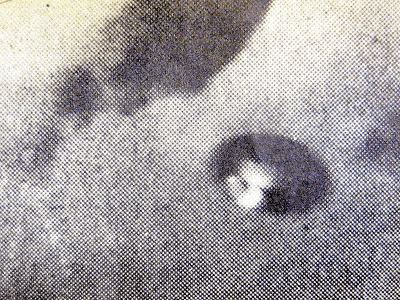 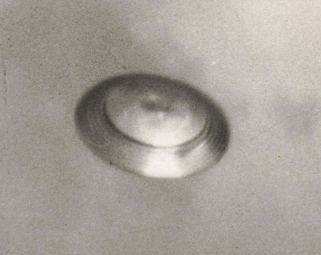
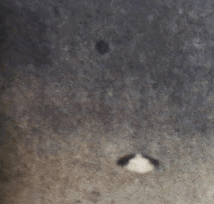 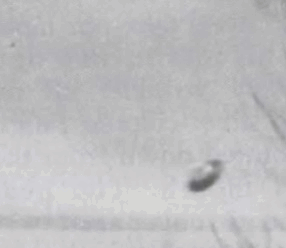
Darmstadt, Germany, August 1953; Drakensberg, South Africa, 1956; Corsica, February 1971; Indiana 1977.
Missing from the above is the vital clue— the saucer seen landed on Vaucluse Beach, near Sidney, Australia, on July 19, 1965. Fortunately, the witness was an aircraft design illustrator, Denis Crowe. He drew an expert impression of what he had seen.
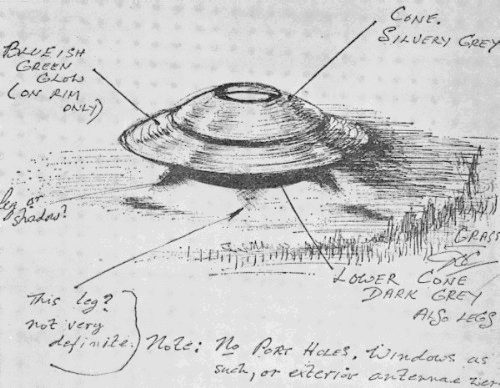
According to Crowe’s diagram above, the saucer dome was really a flattened cone of light gray metal with a darker gray metal (flatter cone) disc around it (hues seen in the photos as well). Comparing his illustration and description to the photos above reveals it is the same saucer (or type) contained in pictures as old as 1953 and seen over a world away in Europe.
The Australia 1965 incident is the most significant sighting pertaining to this type of saucer because it links it not only with the likelihood it is British, but also as the craft that would create the beguiling “saucer nests” of Australia beginning in January 1966. This gives it a protracted stay in Australia and also gives us a clue on its propulsion.
These “saucer nests” fascinated the Australians, but they also proved crucial on the world scene. These reports started arriving in the US in March 1966, the big month of The Great Flap of 1965-1967. The incidents in Australia were pivotal to convincing the world that a global phenomenon was afoot, all of it from the same ET source. However, the saucer at work in Australia was clearly different than anything at work in the USA. And as the pictures above prove, side-by-side to Denis Crowe’s illustration, it wasn’t anything new either like Lightcraft.
In order to understand these January 1966 saucer nests in context, it is necessary to start with Crowe’s encounter on a beach near Sidney 6 months before.
On a quiet, rainy Monday evening around 5:30 p.m., July 19, 1965, Denis Crowe was walking his dogs along the beach near Vaucluse and his home. On the grassy/sandy demarcation point of the beach he saw a blue/green glow. As he approached closer, he realized it was a flying saucer. Before he had moved to Australia, he had been a technical artist for aircraft in England and was thus able to notice many details.
“Its diameter appeared to be about twenty feet. I estimate its height at nine feet, including what appeared to be legs protruding from the bottom. Its rim was glowing a greenish blue, while the top and bottom halves were dullish silver-grey. A hollow in the top could have been a glass dome. As it took off, a yellow or orange glow appeared beneath. Its take-off run was only fifty or sixty feet. I looked round hoping to see someone else who saw what I saw, but my only company was about a dozen or so dogs. While the object was stationary, they were all barking loudly at it. After it took off, they were strangely silent.”
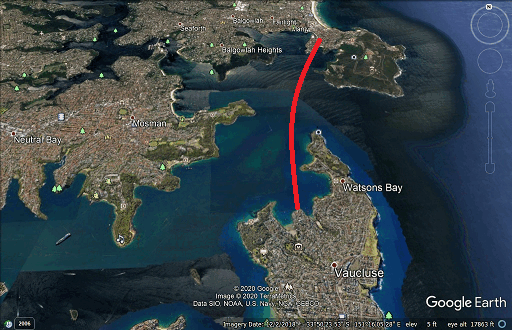
The saucer flew from the beach and disappeared over Manly across the bay.
Due to the fact it was spinning, the Royal Australian Air Force spokesman said it may have been a tornado.
Six months later the mystery would deepen. Mystifying “saucer nests” dotted the landscape around Tully in Queensland, a fertile area in the north of Australia where the climate is perfect for growing bananas and sugar cane. Swamps exist around the river and border the cane fields and banana orchards. Here crocodiles nest and skulk, and hundreds of brightly colored insects streak through the humid air.
It is also around here that at 9 a.m. on the morning of January 19, 1966, a glowing blue-gray saucer was seen lifting off. George Pedley was driving his tractor to his banana field when he heard a hissing sound and then rising from behind the orchard was a “spaceship” spinning rapidly to the point he referred it to as vaporous (I assume the blur like that from a propellor). For about 60 feet into the air it continued to climb. Then it dipped, recovered, and zipped off at fantastic speed. He sidetracked and investigated the spot near Horseshoe Lagoon.
The thick reeds were matted down in a circle about 30 feet in diameter. They were swirled clockwise and unnaturally dried.
The property was owned by Albert Pennisi, whom Pedley eventually told. He then came out. Both marveled at the neat circle. He then remembered that early that morning his dog had gone “mad” and “bounded” to the area of the swamp.
Tully was a small community, and George Pedley had a good, honest reputation. Thus the local townsfolk quickly came out to visit the site and when reporters soon visited they were told of Pedley’s good reputation. The next day two more “saucer nests” were found, older and of different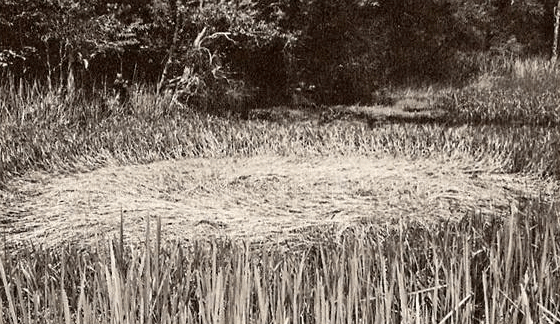 sizes. sizes.
Only once was a flying saucer seen directly associated with such a swirled, matted area. But Pedley’s startling encounter was enough to merit the name “saucer nest” to all such locations when found thereafter.
The first saucer nest at Tully.
However, the saucer nests of Australia were quite different than the “landing” areas in the heartland of the USA. These circular nests in tall reeds (or grass) were swirled, as if blades or a disc whipped around at tremendous speeds right over them. They were like mini crop circles about 28 feet in diameter. In America the landing spots were noted for dried or withered vegetation and desiccated soil, as if something quite radioactive touched down. The reeds in Australia were said to be dried out but not radioactive (University of Queensland tested them). Yet the “nests” certainly indicated something had generated a torrential vortex and some drying agent over them.
The photos of the domed flying saucer in flight and Crowe’s encounter compulsively draw us to the saucer nests of Tully. That George Pedley saw the same saucer that Crowe illustrates is evident by the description. He even 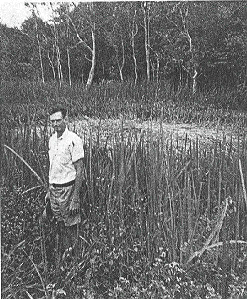 gives it the same dimensions as Crowe and the same 60 foot take-off run. gives it the same dimensions as Crowe and the same 60 foot take-off run.
George Pedley standing before the nest at Tully.
A closer connection to the Crowe encounter comes from The Dominion newspaper. The A.P.R.O. Bulletin was in depth and referred to this article in their March 1966 issue. “. . .the February 26 issue of ‘The Dominion’ said that a similar depression was found in a swamp one mile east of Sydney, Australia’s Bankstown Airport [south of Vaucluse Beach], and seems almost identical to the other ‘nests’ near Tully. This depression is 20 feet in diameter and was found by two school boys as they took a short cut through the swamp on their way home from school. ‘Tall reeds were flattened into the mud as if by some tremendous force and all were in a perfectly clockwise position,’ said ‘The Dominion.’ The boys also noticed what they described as a ‘pungent, chemical smell’ but which was gone when they went back the next day. . . Photos of the nests show a depressed area with the reeds plainly 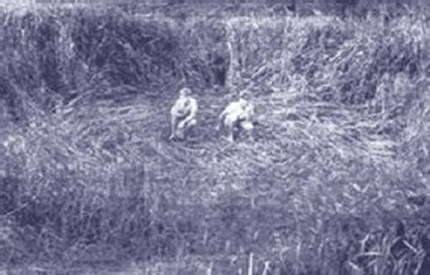 swirled from the center out, as if a powerful down draft of air had acted upon them.” swirled from the center out, as if a powerful down draft of air had acted upon them.”
The boys sit in the nest near Sidney.
In their March 1966 issue A.P.R.O. also expanded on Pedley’s account and mentioned in detail: “Pedley’s attention was attracted to the spot by a hissing sound while he was driving his tractor through neighboring property. ‘It sounded like air escaping from a tire’”— drawing yet another similarity to Crowe’s account. When the saucer rose up from the beach, he said it made a sound like air being forcibly released from a balloon.
Pedley said he “found a circular area in which the reeds are flattened in a clockwise direction and dried, whereas the surrounding reeds are green and healthy.”
Several clues are contained in the collective news readings. “The large nest,” as Pennisi would explicitly confirm later, “was 28 feet in diameter and clockwise, and the smaller nest was 8 feet and anticlockwise.” Within the small nest the reeds were not dried. (The smaller was suspected to be a crocodile mating nest.) When the craft took off, it headed Southwest— inland. The take-off run for this saucer is 60 feet, and we can surmise the pilot goobered here and had to recover.
Most important is the propulsion of the craft. The disc spun so rapidly as to be a blur. This is confirmed by the swirled nests of reeds. At another swampy location, the speed must have been so intense it had ripped the reeds out by the roots. . . . “Mr. Pennisi went into the 5 foot deep swamp to retrieve some of the grass. The ‘grass’ or ‘reeds’ and the mud that clung to the roots were floating on the top of the water ‘which is most unusual’ according to Pennisi. He commented that ‘they must have been sucked up by something.’”
Clearly, the bottom of the saucer’s disc was spinning rapidly. This sets it apart from Lightcraft technology and links it to the earliest proposed type of nonconventional technology for flying saucers— the ‘magnetic sink’ proposed by Canadian engineer Wilbert Smith in 1950. Other corollaries are the blue or cyan glow at low speed, and in Crowe’s case he noticed an orange-yellow glow from the bottom as it powered up. The disc spins so rapidly it is suggestive of the Schwemmteiche Saucer, the only eyewitness account we have of a German wartime experiment.
However, there is something different here. Pedley’s tractor motor didn’t stall, and he said he was only 25 yards from it as it rose over the fronds; and the reeds never tested positive for radiation. At least one of these events should have happened if this saucer was operating purely on such electromagnetic principles.
The only way to explain it is to put together several clues— One clue are the German designs that entered the public forum, including one attributed to Dr. Giuseppe Belluzzo and two German scientists. All of them work on some principle of a rotating cambered or slotted disc or its outer rim. And that seems to be in play here. The spinning disc does not appear to be tapping into electromagnetic energy. It is the airfoil giving the craft lift. It is thus the helicopter principle. Could the bottom of the disc be cambered or slotted? A slotted lower disc could also act in place of air scoops.
Vivid reports, in this case written by the Sun’s special investigator Ben Davie, heavily suggest the disc of this saucer was likewise designed. Of great significance here is the account of the “floating nest” found a few days later (after the initial 3 had been reported). It is the one referred to above in the water. “One of the nests is a floating platform of clotted roots and weeds apparently torn by tremendous force from the mud bottom under 5 feet of water.” According to Mrs. Pennisi the floating mat could support the weight of two men.
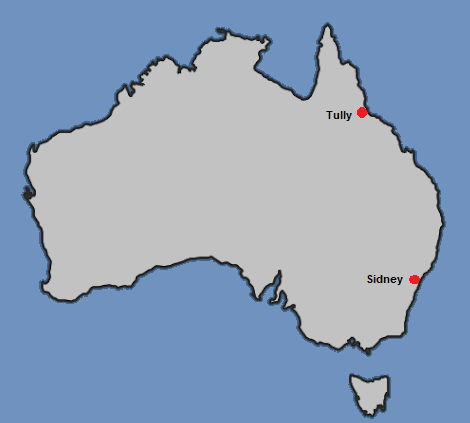
The locations of the saucer nests and saucer— Tully and Sidney. What’s the connection?
Unlike the ‘magnetic sink’ proposal, the disc does not appear to be collapsing energy from the magnetic field. Lift is being caused by the disc, but something generating a cyan glow at the rim sets it in motion. Yet the power source is clearly not electromagnetic.
But what caused the orange-yellow glow? Internal jets?
Until 1959 there were no details about the German World II fliegenden teller (flying plate). These details came from former S.S. Major Rudolf Lusar’s 1959 book German Secret Weapons of World War Two. Much later plans entered the public forum, each one attributed to the designers that Lusar had mentioned, which included Rudolf Schriever, Richard Miethe, Otto Habermohl, and even Giuseppe Belluzzo. They showed saucers with various internal jets and spinning disc propulsion units. In 1955 German scientist Heinrich Fleissner took out a US patent with yet another variation of the design, with internal jet turbine and rotating disc.
Aside from the powerful Schwemmteiche Saucer system, the only thing that antiquates these designs is the technology behind the jet powered foo discs (fighters) and phoo bombs, and according to Renato Vesco the British got this technology, both in plans and in proof of principle (actual models).
Thus it is truly intriguing that long before any of these revelations a former intelligence officer in the US Air Force had told Donald Keyhoe the saucers were British and based on captured Nazi designs. It is not just intriguing because it comes before all these published assertions. It is intriguing because the No 1. photo’d flying saucer is one of the first in existence and the same one that caused the saucer nests in Australia. It didn’t stall Pedley’s motor. Therefore we must deduce it wasn’t using some high powered magnetic sink. The closest designs that can explain it are those attributed (much later) to the German engineers.
Keyhoe was beginning to distinguish himself as a sober voice pursuing the reality behind flying saucers. He was True magazine’s aviation expert, and in this capacity was investigating the most recent saucer reports in 1949. By early 1950 he had published the most widely read magazine article in history for True. It was entitled Flying Saucers Are Real.
In 1950 he followed it with a popular paperback of the same name. In it he writes of his encounters with a “John Steele,” an alias name he had to give this suspicious informant in order to print his encounters with him.
Steele was a former intelligence officer in the Air Force, now working as a syndicate writer. At the Press Club he heard Keyhoe was working on the saucer problem. He called Keyhoe. As usual, Keyhoe was quickly suspicious Steele was still working with the Air Force and trying to plant disinformation.
In their first conversation, Steele said he had wondered about saucers since 1945, wondering if the saucers were the foo fighters. He said they had thought they were Nazi devices. This was basically the crux of his call. He was worried. “Well, it’s obviously either Russia or us. If it is the Soviet— well, that’s what’s worried me. I don’t think it should be treated like a joke, the way some people in the Pentagon take it.”
Keyhoe writes: “I stared at the phone, trying to figure him out. ‘I’d like to talk it over with you,’ I said. ‘Maybe you’ve got something.’”
Steele demurred and said this was all he knew. He suggested the Eighth Air Force should have the information. After their phone conversation ended, Keyhoe writes: “If it was an attempt at a plant, it was certainly crude. The mention of his former Air Force connection would be enough to arouse suspicion, unless he counted on his apparent frankness to offset it.”
Keyhoe had Steele’s press credentials checked out. He came back clean, as a “straight shooter.” But in discussions with his editor, Keyhoe still felt Steele could be passing on bogus information to get him to look into the Soviet angle and away from the earth shattering evidence the saucers could be interplanetary.
Later, Keyhoe invited Steele to lunch. After Keyhoe casually told him some of the information he had gleaned in his investigation, Steele decided it couldn’t be the USA making the saucers. “After what you’ve told me,” said Steele, “I can’t believe it’s ours. It must be Russian.”
Keyhoe didn’t think that likely. He thought they’d be pretty stupid to be testing their top secret saucers over America. And even if one went wild that doesn’t explain so many other reports.
As their luncheon continued, Keyhoe told him how he was going to fly to the west coast and investigate more cases. “Steele looked at me thoughtfully. ‘You know, True might force something into the open that would be better left secret.’ He smiled ironically. ‘I realize that sounds peculiar, since I suggested the Russian angle. But if it isn’t Russian— though I still think it is— then we have nothing to worry about.’”
Keyhoe’s suspicion was truly piqued. “I was almost sure now that he was a plant. During the rest of the luncheon, I tried to draw him out, but Steele was through talking. When we parted, he gave me a sober warning. ‘You and True should consider your moral responsibility, no matter what you find. Even if it’s not actual security, there may be reasons to keep still.’”
After he left me, I tried to figure it out. If the Air Force was back of this, they must not think much of my intelligence. Or else they had been in such a hurry to get a line on True’s investigation that they had no choice but to use Steele. Of course, it was still possible he was doing this on his own. Either way, his purpose was obvious. He hoped to have us swallow the Soviet missile answer. If we did, then we would have to keep still, even though we found absolute proof. Obviously, it would be dangerous to print that story.
Much later Keyhoe was surprised to pick up the phone and it was Steele. He still wanted to know if Keyhoe was working on the saucer mystery. Keyhoe said yes. Steele had information. He said it was from a reliable source, the implication being it was from his days in intelligence. For half an hour he spoke, elaborating on what he had been told.
The discs were British. The rotating disc was cambered, and thus it operated on the helicopter principle. It was based on Nazi designs during World War II. The British seized the models at the end of the war, took them to England and backworked them. They knew they needed a super weapon in case of Soviet aggression. Perfected, these saucers could be powerful delivery systems for missiles. The story is involved and long, and we don’t need all the claims of how they built 100 foot discs and tested them over the ocean. But the sequence is interesting. Steele claims his source told him—
Keyhoe writes: “The first British types had been developed secretly in England, according to this account. But the first tests showed a dangerous lack of control; the disks streaked up to high altitudes, hurtling without direction. Some had been seen over the Atlantic, some in Turkey, Spain, and other parts of Europe. . . .The British then had shifted operations to Australia, where a guided- missile test range had been set up.”
This last part sounded believable to Keyhoe because he knew there was a test range in Australia. According to Steele the first British tests began in the Spring of 1947 and finally they perfected them. The USA caught wind of the British tests and Britain decided to cut the US in. Supposedly, it was for more aid or US nuclear secrets.
There was much that was ludicrous in Steele’s source— the remote control nature of the discs and how the British could fly them from control ships in the Pacific over the United States.
But taking the greater picture into view, there is something of weight in Steele’s information. It is a string that neatly sews together the photos of that type of saucer with a rotating disc, the principles of which are all too earthly, and the clear description of it in operation in Australia and associated with the swirled saucer nests. Steele was relaying the same type of information in 1950 from American sources (undisclosed) that Renato Vesco would relate in the 1960s and 1970s from German and Italian sources. Both said the British had gotten Nazi plans and models.
By Vesco’s time, he could go into various propulsion theories. But in 1950 “Steele” could not or his source certainly wasn’t going to release it. When asked by Keyhoe, Steele said that he couldn’t uncover how the saucers were powered. In answer to Keyhoe’s, questions about altitude, Steele thought the discs could go up to 60,000 feet, probably higher. (Later, the fantastic altitudes of supposed German saucers would be a common theme). He asked Keyhoe what he thought of the explanation. Keyhoe told him it was more “plausible than the Soviet idea,” but he didn’t want to point out the flaws in all the minutiae.
Steele finally expressed his relief. He was glad it was the British and not Soviet.
Keyhoe wouldn’t buy into it. He checked and there was an altitude limit for anything operating on the helicopter principle. Radar reports had tracked UFOs flying so high as to almost be in low orbit. There was no way a cambered disc could do that. Keyhoe would eventually dismiss this theory in favor of the interplanetary theory. But this presupposes that Steele’s information was perfect and entirely correct. It also presupposes that those high flying UFOs were also one and the same as this very subsonic, low altitude saucer.
It is a fact that the information Steele related in its basics would be the pattern that this saucer would mimic over the years and decades to come. The saucer in question on this page was photographed in areas where only Britain could be flying them. And if flying out of Cyprus, as it is implied in the reports these were being seen over Turkey, this could explain the 1955 sighting in the Trans-Caucasus of the Soviet Union (just east of Turkey) made by US Senator Richard Russell, Armed Services Committee, Ruben Efron, committee consultant, and Lt. Col. E.U. Hathaway, US Army staff officer assigned to the committee. When traveling by train:
On 4 Oct. 55 at 1910 hours between Atjary and Adzhijabul in Trans-Caucasus region, two round and circular unconventional aircraft resembling flying disks or flying saucers were seen taking off almost vertically one minute apart. Disk aircraft ascended near dusk with outer surface revolving slowly to right and with two lights stationary on top near middle part. Sparks or flame seen coming from aircraft. No protrusions seen on aircraft which passed over observers’ train. Both flying disk aircraft ascended relatively slowly to about 6000 feet, then speed increased sharply in horizontal flight both on northerly heading. Flying attitude of disk remained same during ascent as in cruise, like a discus in flight. Two operating searchlights pointing almost vertical seen near takeoff area located about l-2 miles south RR line. After sighting Soviet trainmen became excited and lowered curtains and refused permission to look out windows. US observers firmly believe these unconventional aircraft were genuine saucer or disk aircraft.
Hathaway later said to the Air Attaché: “We’ve been told for years that there isn’t such a thing, but all of us saw it.”
It is relevant to note that the gentlemen saw the disc spinning, which from their vantage indicates the entire bottom of the disc spun and not just the top part. They saw orange-yellow glow come from the bottom, calling it flames or sparks. This same saucer would seem to be the same one Denis Crowe illustrated as sitting on the beach near Sidney, Australia, in 1965, the timeframe when something, apparently a tremendously spinning disc, was weaving the remote grassy areas near Tully and seen and described by George Pedley.
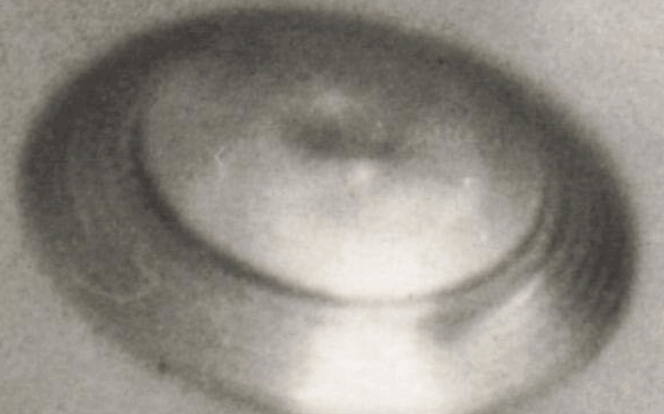
There appears to be 6 louvers on the lower disc— 7 if you count the rim. All photos and Crowe’s sketch show a noticeable gap between the dome and the disc, indicating the entire disc is capable of spinning. Perhaps there are struts underneath connecting the rim to the dome. Some of the German designs indicated jets were needed to start the disc, but in flight there was more of an electromagnetic component involved and the disc did not need to spin rapidly. No picture shows this saucer with a blurred disc.
The photos and the reports indicate this saucer works on far more than the helicopter principle. The disc does not always have to spin rapidly, and perhaps not all the time. It sounds strangely reminiscent of Viktor Schauberger’s Repulsine concepts, only far superior and tailored in the hands of aeronautical pioneers. There is something of the foo fighters, as described by Vesco and ASAAF Intelligence. Something sets this in motion, and if it doesn’t cause power outages I would have to say it is even superior than the Schwemmteiche system. The lack (apparent) of using powerful electromagnetic energy may explain its speed limits, or due to its smaller size it simply wasn’t powerful enough to stall Pedley tractor motor.
The combine reports and photos make this saucer quite enigmatic. In Australia, the swirled areas indicating landing spots suggest some form of disc, spinning rapidly (and taking in air). The glow of the disc, blue-green around the rim at rest, and then rising to orange-yellow underneath is all too familiar to us by now. It seems a variation of basic principles laid out by Wilbert Smith and also seen in Lightcraft technology. It has to do with ionization and heat, whatever the exact propulsion power of the engine is.
Compared to the designs attributed to German and Italian inventors, the saucer we can call the “British Secret Flying Saucer,” for convention sake, is far superior.
The problem is that the whole Nazi Flying Saucers topic is exaggerated to the proportion of myth and then it generates elements that are an easy kill for debunkers, who like all predators are never energetic enough to go after the bigger and robust animals in any thriving herd. Nazi saucer buffs will take rumors and stories to extremes where saucers fled Germany with plans and important people to South America. Or there is the story of a secret Nazi base on Antarctica. Or that saucers are a part of the Third Power, the power that is secret to the large majority of people, a continuation of the Third Reich like Bond’s nemesis Specter. In addition to the USA and Soviet Union (in those days) it was the third major influential power on earth— Illuminati with a swastika and a base on the Moon.
Enough has been uncovered that the Nazis were into some novel developments. But much has been uncovered and even proudly proven that Americans were also developing some remarkable technology. Both were racing to develop atomic power, and Americans won.
Both Britain and the United States could have seen the advantage of electromagnetic power on their own, and it would seem both took it far enough to know its limitations. Lightcraft, for instance, generates too much radiation for commercial use.
The events in the Schwemmteiche north of Altgolßen in 1944 tell us the Nazi’s were indeed developing a flying saucer. . . .Of course, the flying saucer at the Schwemmteiche had to go somewhere. The S.S. might have blown it up or even flown it to a nearby lake and dumped it, but one of the scientists or even the plans might have gotten to the British. Later events would support Renato Vesco’s assertion the British and American’s got the foo principles.
So if the Nazis were a significant part of the origin of flying saucer technology, where did it get us? Not far really. The heavy electromagnetics of the spinning disc excludes the device from commercial and practical aerospace. It’s good for spy missions or PsyOps. Otherwise it sits in hangars.
Something was clearly going on over the east coast of Australia starting in the summer of 1965, near the same time the USA was beginning to experience the beginnings of The Great Flap. The difference in Australia is that the UFO was seen clearly in July by a qualified artist, and his work reflects several photos, both prior to his encounter and after, preserving a saucer that flew over the world in places that could be reached by Great Britain and its dominions. Denis Crowe’s sketch is echoed in the daytime description by George Pedley, who gives the saucer the same dimensions. Something with a powerful spinning disc that generates a corona plasma and dries out reeds was in operation, and it reflects very human technology.
What is truly disturbing is this: at the same time in America that black projects go into conspicuous action, an old project goes into action in Australia. What are the odds this is coincidence? If not, what and who could orchestrate something like this?
Domes with spinning discs, however, were only a small part of the photographed phenomenon over those two years. Lightcraft formed the bulk of it. Domed discs utilize understandable aerodynamics whereas Lightcraft is radically independent of it. This distinction must be drawn clearly. At the same time Australians were seeing this old time saucer, there was a crash at Kecksburg, Pennsylvania, that revealed Lightcraft’s novel bell capsule close up. It had a profound effect, and it is a vital clue here. It is one we must understand before we stride into the darkness of PHASE 3. The crash at Kecksburg in 1965 can reveal much about this dark future, more than it can about its secretive past.
|